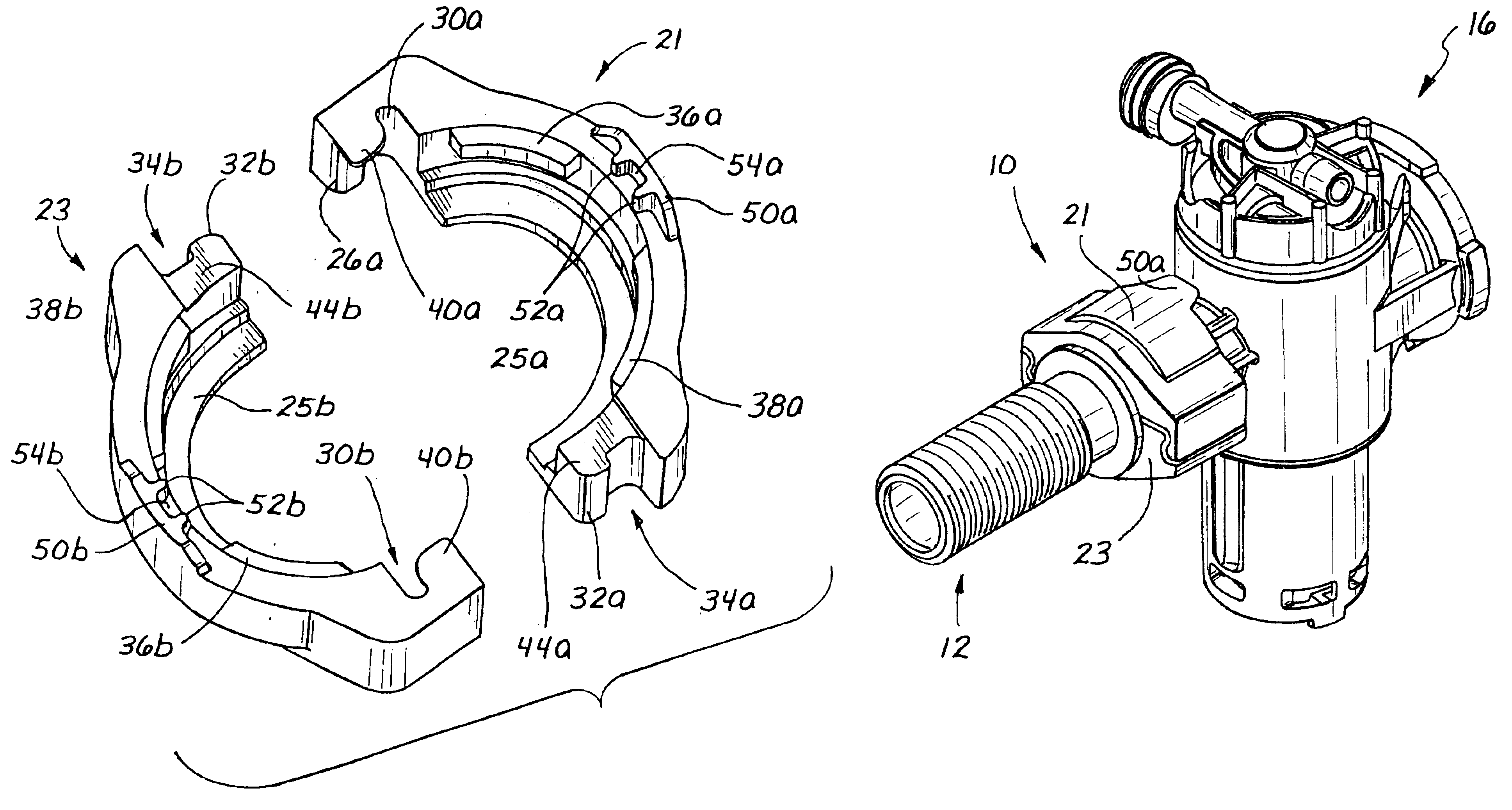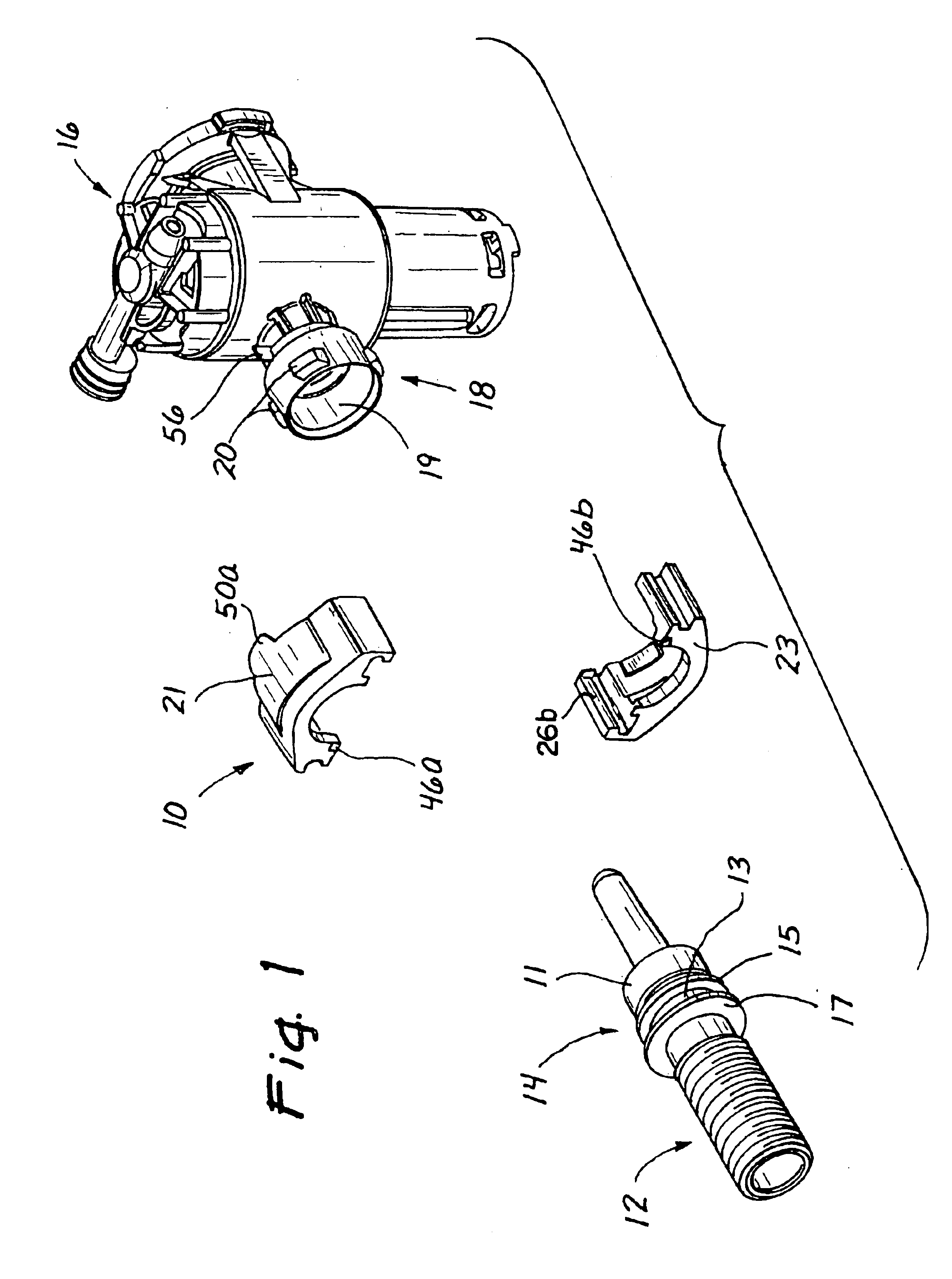Bayonet quick coupler
a quick coupler and bayonet technology, applied in the direction of flanged joints, fluid pressure sealed joints, sleeves/socket joints, etc., can solve the problems of insufficient assembly time of threaded couplers, inability to complete the support around the circumference of the coupler, and high propensity to damage, so as to avoid cross threading or inappropriate tightening, quick and easy attachment to and from the coupler, the effect of avoiding damage to delicate screw threads
- Summary
- Abstract
- Description
- Claims
- Application Information
AI Technical Summary
Benefits of technology
Problems solved by technology
Method used
Image
Examples
Embodiment Construction
[0023]A first preferred embodiment of the quick coupler of the present invention is illustrated in FIG. 1 and designated by the reference numeral 10. This coupler 10 in the illustrated environment provides a device for coupling a shank assembly 12 to a valve assembly 16. The shank 12 has a first conduit 14. The valve assembly 16 has a second conduit 18 with a coupling 19 of the second conduit 18. The first conduit 14 is adapted for coupling to the second conduit 18 by the coupler 10.
[0024]The quick coupler 10 in this embodiment comprises two identical pieces or sectors 21 and 23 that combine to form a nut as shown in FIG. 2. Thus, the sectors 21 and 23 cooperate to form the single quick coupler 10 in the form of a nut or housing which connect the conduit 14 of the shank assembly 12 to the conduit 18 of the valve body 16, as shown n FIG. 5. The coupler 10 has opposite end faces and a annular hole extending along a central axis between the opposite end faces of the coupler. In the pre...
PUM
 Login to View More
Login to View More Abstract
Description
Claims
Application Information
 Login to View More
Login to View More - R&D
- Intellectual Property
- Life Sciences
- Materials
- Tech Scout
- Unparalleled Data Quality
- Higher Quality Content
- 60% Fewer Hallucinations
Browse by: Latest US Patents, China's latest patents, Technical Efficacy Thesaurus, Application Domain, Technology Topic, Popular Technical Reports.
© 2025 PatSnap. All rights reserved.Legal|Privacy policy|Modern Slavery Act Transparency Statement|Sitemap|About US| Contact US: help@patsnap.com



